Santoku and Gyuto knives are both widely used as multipurpose kitchen knives in Japan, and at a glance they even look similar. The Gyuto (literally “cow sword”) is basically the Japanese term for a Western-style chef’s knife, while the Santoku (“three virtues”) is an all-purpose Japanese knife that was developed by blending features of both Japanese and Western knives.
With both being versatile and popular, you might wonder: what sets a Santoku apart from a Gyuto?
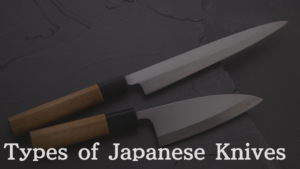
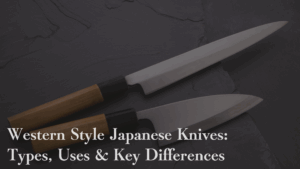
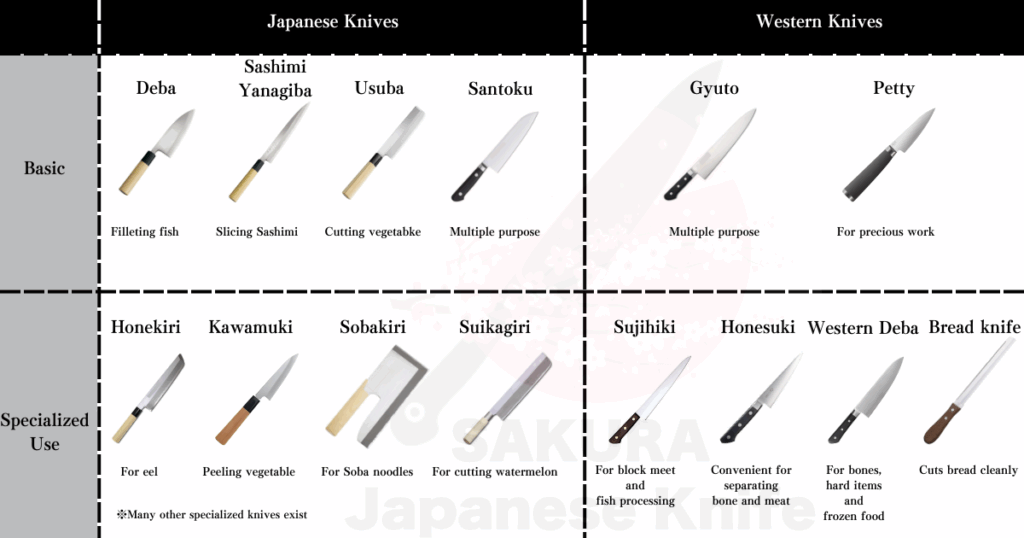
In this article, we’ll explain in clear terms the history, common features, and key differences between Santoku and Gyuto knives. If you’re comparing a santoku knife vs chef knife, read on to understand which of these two makes the better all-purpose choice for your kitchen.
History of Santoku and Gyuto Knives
Santoku knives are a staple in Japanese home kitchens, while Gyuto knives (the Japanese-style chef’s knife) are used widely by professional chefs and home cooks alike. Both are extremely popular today as versatile, general-purpose blades. However, each knife came into being and gained its place in Japan through a different historical background:
| Aspect | Gyuto (Western Chef’s Knife) | Santoku |
|---|---|---|
| Time of Origin | Late 19th century (Meiji era): Western “chef’s knife” was introduced to Japan, then adapted by Japanese bladesmiths and toolmakers, leading to its wide adoption. | Post–World War II (late 1940s–50s): Developed in Japan to meet the needs of more diversified home cooking after the war. |
| Historical Background | – During the Meiji Restoration, Western culture and cuisine (especially meat dishes) became popular, creating a need to cut large pieces of meat.– Traditional Japanese knives had difficulty with big cuts, so Japanese knifemakers improved upon Western chef knives.– Over time, the gyuto became established as a general-purpose knife used not only for Western cuisine but in all kinds of cooking, by pros and home cooks alike. | – In postwar Japan, it was common to use different specialized knives (nakiri, deba, etc.) for each type of ingredient, but there was demand for one knife that could handle meat, fish, and vegetables.– Blending the best features of Japanese and Western knives, the Santoku was created as an all-in-one home kitchen knife. |
| Origin of the Name | – The name Gyuto literally means “cow sword,” referring to a knife for carving beef.– It’s also said to come from a Japanese approximation of the English term “chef’s knife.” | – Named Santoku (meaning “three virtues”) because it’s said to handle three types of ingredients (meat, fish, vegetables) or three types of cutting tasks (slicing, chopping, mincing) with one knife. |
| Spread & Adoption | – From the Meiji through Taisho eras, as Western cuisine spread in Japan, gyuto knives came into use among professional chefs and even home cooks.– Japanese traditional forging techniques were applied, and the gyuto became established as a highly versatile knife.– During Japan’s rapid economic growth post-WWII, as kitchens modernized, the gyuto further solidified itself as a go-to all-purpose knife. | – During the postwar economic boom, as home cooking diversified, the Santoku knife spread rapidly as a convenient multipurpose knife for the masses.– Today it has secured its place as one of the standard knives in Japanese households, and it’s even widely known abroad as the “Santoku knife.” |
In general, double-edged knives are categorized as Western-style knives. However, since the Santoku was invented in Japan, we classify it as a Japanese-style knife on this site.
That said, classifying the Santoku can be tricky. Some knife experts classify the Santoku as a Western knife on the grounds that it is double-edged, while others don’t put it in either category (simply calling it a general home-use knife). There isn’t one absolutely “correct” classification, as the Santoku sits somewhat between traditional Japanese and Western knife styles.
Santoku and Gyuto Knives: Common Features
First, let’s look at what these two knives have in common.
Both Are Double-Edged Knives
Kitchen knives can have either a single-edged blade or a double-edged blade. Both Santoku and Gyuto knives are double-edged knives.
Below is a quick comparison of the advantages and disadvantages of double-edged vs single-edged blades:
| Double-Edged Knife | Single-Edged Knife | |
|---|---|---|
| Merits | – Symmetrical blade grind, so it’s easy to use even for beginners (works for both right- and left-handed users).– Versatile for a wide range of ingredients (meat, vegetables, fish, etc.).– Very user-friendly; a great all-around knife to have in a home kitchen. | – Can achieve extremely sharp cutting performance; great for slicing sashimi or filleting fish.– Produces very clean cuts and allows for delicate, high-precision work.– Ideal for specialized, precision tasks in professional cuisine. |
| Demerits | – Not quite as razor-sharp or acute an edge compared to a single-edged knife.– Not as well-suited for certain specialized Japanese tasks (for example, ultra-thin sashimi slicing or other fine techniques). | – Has a dedicated right-hand or left-hand orientation (less universally versatile).– Sharpening and handling require more skill, making it less beginner-friendly.– Low versatility: typically you need multiple different single-purpose knives for various tasks. |
In summary, single-edged knives deliver extremely sharp, precision cuts but come with difficulties in maintenance and use. Double-edged knives sacrifice a bit of sharpness, but they are easier to maintain and far more user-friendly for beginners.
Note: Single-Edged Santoku and Gyuto Knives Also Exist
While the standard versions of Santoku and Gyuto knives are double-edged, there are also single-edged versions available for these knives. Here’s how they compare:
| Double-Edged Version (Santoku/Gyuto) | Single-Edged Version (Santoku/Gyuto) | |
|---|---|---|
| Merits | – Symmetrical edge, so it can be used comfortably by both right-handed and left-handed users.– Cuts straight without veering, making it easy to control.– Sharpening is relatively simple, so even beginners can maintain it. | – Can achieve an extremely sharp edge and very clean cuts.– The blade bites into ingredients easily, ideal for cuts where a pristine surface is important (e.g. slicing sashimi).– One side of the blade is flat (or slightly concave), so food releases more easily and is less likely to stick to the blade. |
| Demerits | – Often not as acute an edge angle as a single-bevel knife can achieve.– Not the best choice for certain traditional Japanese techniques (like ultra-thin sashimi slicing or precise fish butchery).– Lacks some precision for fine detail work (for example, trimming sinew) compared to a single-bevel knife. | – By design, comes in dedicated right-handed or left-handed versions, so you must choose one that matches your handedness.– Less versatile overall and harder to handle for general use.– Has unique sharpening and maintenance requirements, which can be challenging for beginners.– When chopping straight down, the blade tends to drift to one side (due to the single bevel), so it requires good technique to cut straight. |
For most users who aren’t specifically seeking the ultra-sharp performance of a single-bevel knife, it’s generally best to stick with the normal double-edged version of a Santoku or Gyuto.
Both Are Multipurpose Knives
Despite the word “gyu” (cow) in its name giving it a reputation as a meat-only knife, the Gyuto is actually a versatile all-rounder. Its blade length and shape allow it to handle a wide range of tasks – from finely chopping vegetables to breaking down fish – in addition to cutting up large pieces of meat.
The Santoku knife was created with a similar do-it-all spirit. It emerged by combining the influence of the Western gyuto (introduced to Japan in the Meiji era) with the strengths of the traditional Japanese nakiri (vegetable cleaver). The name “Santoku” means “three virtues,” reflecting the concept of being able to handle meat, fish, and vegetables all with one knife. In the post-WWII period, as home cooking needs diversified in Japan, the Santoku quickly caught on as the go-to multipurpose kitchen knife. Today it holds a firm place as a standard knife in Japanese households, and it has even become well-known overseas as the “Santoku knife.”
Differences Between Santoku and Gyuto Knives
Now let’s examine how Santoku and Gyuto knives differ from each other.
Differences in Blade Length and Size
Santoku and Gyuto knives share a general purpose, but they do have some differences in blade length and overall shape/size:
| Santoku | Gyuto | |
|---|---|---|
| Blade Length | ~165–180 mm (approx. 6.5–7″ blade length) | ~180–270 mm (approx. 7–10+″ blade length) |
| Blade Shape | Tip is slightly curved (“sheep’s foot” style with a gentle rounded tip). | Tip is pointed, and the overall blade profile is slimmer and more tapered. |
The Santoku is tailored for home cooking, emphasizing a balanced size that isn’t too big or too small. In contrast, the Gyuto – while still a multipurpose knife – evolved in Western kitchens primarily for carving larger cuts of meat, so Gyuto knives generally come in larger sizes.
Differences in Usage and Cutting Technique
The Santoku’s slightly curved tip lends itself well to common home-cooking motions. You can use a Santoku to slice by sliding it forward and back on the cutting board, and it also works great for rapid up-and-down chopping (the familiar “tonton” chopping technique often used for mincing vegetables). The Santoku’s blade is also relatively broad, which makes it handy for scooping up chopped ingredients on the blade and transferring them to a pot or bowl.
In comparison, the Gyuto’s pointed, slender tip allows it to excel at tasks like trimming sinew from meat or piercing into ingredients. Its longer blade makes large slicing or drawing cuts more efficient (for example, cutting through a big roast or severing tough vegetable fibers). The trade-off is that the longer blade can feel a bit unwieldy for novice cooks, and it requires more space and technique to use comfortably.
Ideal Uses and Users for Each Knife
In Japan, the Santoku is considered the quintessential all-round kitchen knife for home cooks. If you’re only going to have one knife in your kitchen, many would recommend making it a Santoku because it can handle meat, fish, and vegetables. Its slightly shorter blade is nimble and easy to maneuver, which is a big plus for beginners or those with smaller kitchen spaces.
On the other hand, the Gyuto is widely used by professionals and experienced cooks, but it’s also common in households. A Gyuto is especially well-suited for people who prepare a lot of meat or frequently need to cut through larger ingredients. Because of its longer blade, a Gyuto performs best if you have a generous cutting area and you’re comfortable with basic knife-handling techniques (it might feel a little unwieldy in cramped kitchens or for absolute beginners).
Summary
To recap, here’s a quick summary of the commonalities and differences between Santoku and Gyuto knives:
| Santoku Knife | Gyuto Knife | |
|---|---|---|
| Common Points | Double-edged; serves as a versatile all-purpose kitchen knife. | Double-edged; serves as a versatile all-purpose kitchen knife. |
| Key Differences | – Shorter blade; broader blade width; tip is slightly rounded.– Extremely user-friendly for home use, ideal for beginners. | – Longer blade; narrower blade; tip is pointed.– Requires a bit more skill and space to use effectively; excels at cutting large cuts of meat. |
In short, if you often cook large cuts of meat, a Gyuto (chef’s knife) might serve you best. If you prioritize a convenient, do-it-all blade for everyday cooking, you can’t go wrong with a Santoku. As a final takeaway, the classic santoku knife vs chef knife decision really comes down to your needs: a Gyuto is great for heavy meat prep and larger tasks, whereas a Santoku is our top recommendation for an easy-to-handle, all-purpose kitchen knife for general use.
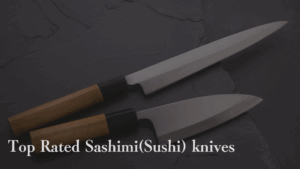
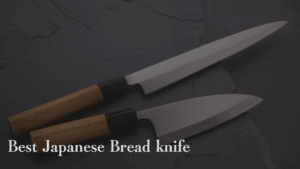


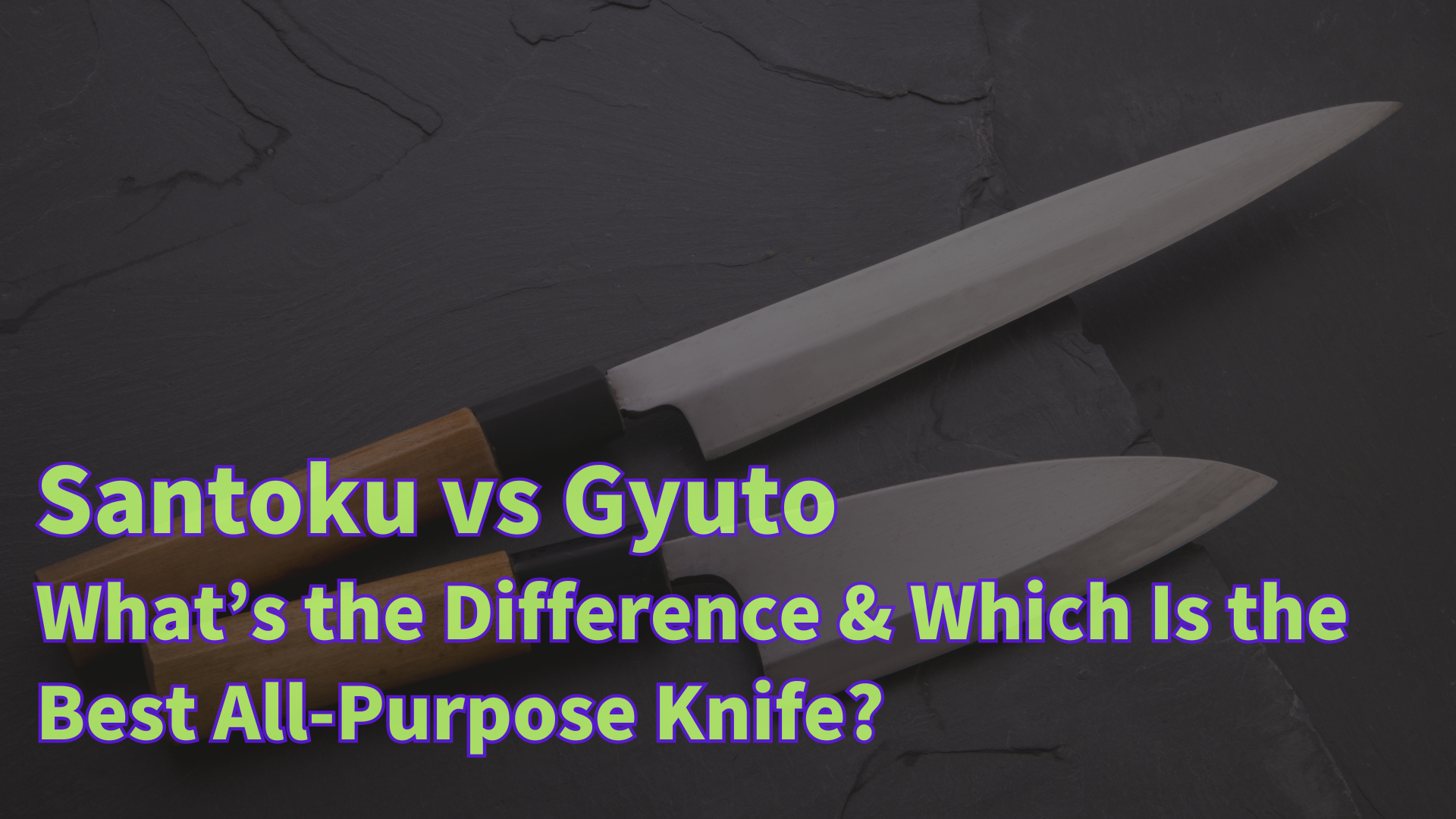
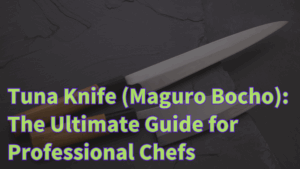
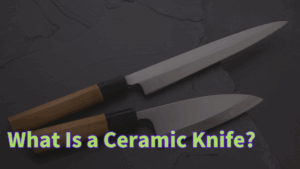

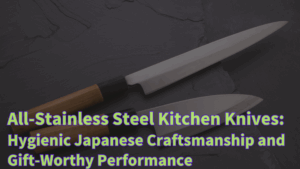

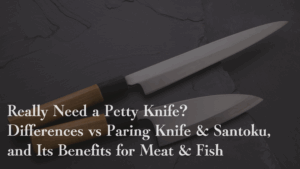
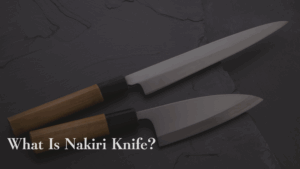
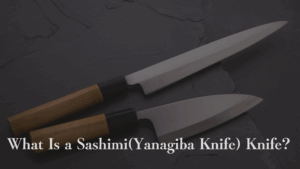
Comments